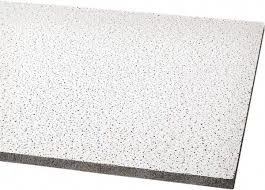- Afrikaans
- Albanian
- Amharic
- Arabic
- Armenian
- Azerbaijani
- Basque
- Belarusian
- Bengali
- Bosnian
- Bulgarian
- Catalan
- Cebuano
- Corsican
- Croatian
- Czech
- Danish
- Dutch
- English
- Esperanto
- Estonian
- French
- German
- Greek
- Hindi
- Indonesian
- irish
- Italian
- Japanese
- Korean
- Lao
- Malay
- Myanmar
- Norwegian
- Norwegian
- Polish
- Portuguese
- Romanian
- Russian
- Serbian
- Spanish
- Swedish
- Thai
- Turkish
- Ukrainian
- Uzbek
- Vietnamese
nov . 09, 2024 15:09 Back to list
Stylish Access Panel for Decorative Ceiling Installations and Easy Maintenance
Understanding Decorative Ceiling Access Panels A Blend of Functionality and Aesthetics
In modern architectural design, the integration of functionality and aesthetics is paramount. Among the various elements that contribute to this balance are decorative ceiling access panels. As buildings become increasingly complex with intricate mechanical, electrical, and plumbing (MEP) systems concealed above ceilings, the necessity for access panels becomes evident. However, these panels don’t have to be plain and utilitarian; they can also serve as decorative elements that enhance the overall design of a space.
What Are Decorative Ceiling Access Panels?
Decorative ceiling access panels are specially designed openings in the ceiling that allow for easy access to ducts, wiring, or pipes while also blending seamlessly with the surrounding design. Unlike standard access panels, which often stick out like a sore thumb, decorative panels can be framed with stylish finishes, textures, and colors that complement the overall aesthetic of the room.
These panels are typically made from lightweight materials such as aluminum, plastic, or composite materials, allowing for easier installation and maintenance. They can be painted, textured, or even customized to match the ceiling design, ensuring they enhance rather than detract from the room’s visual appeal.
The Importance of Functionality
Despite their decorative qualities, these access panels don’t compromise on functionality. They allow for quick and easy access to the MEP systems housed above the ceiling, ensuring that maintenance and repairs can be carried out efficiently without requiring extensive disruption. This is especially important in commercial spaces where minimal downtime is crucial.
Moreover, with innovations in design, modern decorative panels often include features such as fire resistance, sound insulation, and moisture resistance, catering to the specific needs of various environments. For example, in a restaurant setting where ambiance is key, sound attenuation features can be invaluable.
decorative ceiling access panel

Design Flexibility
One of the standout advantages of decorative ceiling access panels is their versatility in design. They can be customized to match various styles, from contemporary to traditional, industrial to minimalist. Designers can choose from a wide range of finishes, such as metallic, wood grain, or matte finishes, allowing the panels to either stand out as a bold statement piece or blend into the background seamlessly.
In addition, with the rise of technology, some decorative access panels can now be equipped with smart features, such as automatic opening mechanisms and integrated lighting, making them not just practical but also technologically advanced.
Applications in Various Spaces
Decorative ceiling access panels can be found in a multitude of settings. In residential homes, they can enhance living rooms, kitchens, or home theaters, providing easy access to hidden wiring or ductwork while maintaining a clean aesthetic. In commercial environments like offices, schools, hospitals, and retail spaces, these panels ensure that vital systems remain accessible without compromising the design integrity of the area.
In hotels and hospitality venues, decorative panels can contribute significantly to the ambiance. Whether in lobbies, conference rooms, or guest suites, having well-designed access panels reflects attention to detail and a commitment to quality.
Conclusion
In conclusion, decorative ceiling access panels exemplify how functionality and aesthetics can coexist harmoniously within architectural and interior designs. As spaces evolve, so too do the needs for maintenance and accessibility. By choosing decorative panels, designers and builders can ensure that they not only meet practical requirements but also elevate the overall aesthetic of the environment. With numerous customization options available, decorative access panels provide a win-win solution for both style-conscious individuals and functional space designers, making them an essential feature in contemporary architecture.
-
PVC Laminated Gypsum Ceiling Board OverviewNewsApr.11,2025
-
Mineral Fiber Ceiling Tiles Price Analysis and ComparisonsNewsApr.11,2025
-
Crafts of Mineral Fiber Ceiling Tile ManufacturingNewsApr.11,2025
-
Difference Between Gypsum and PVC CeilingNewsApr.11,2025
-
An Overview of Mineral Fiber Ceiling TilesNewsApr.11,2025
-
Advantages of PVC Gypsum CeilingNewsApr.08,2025







